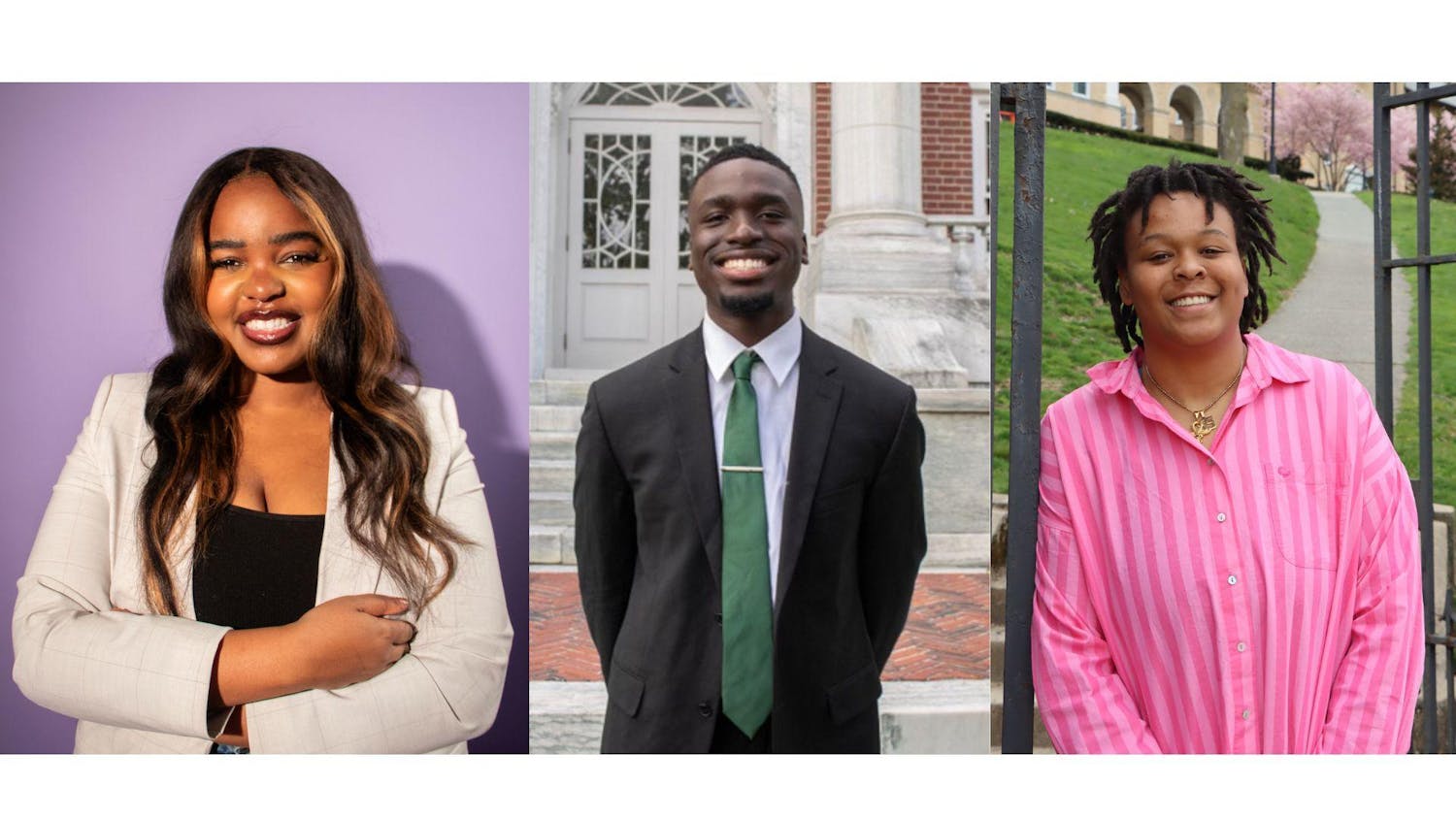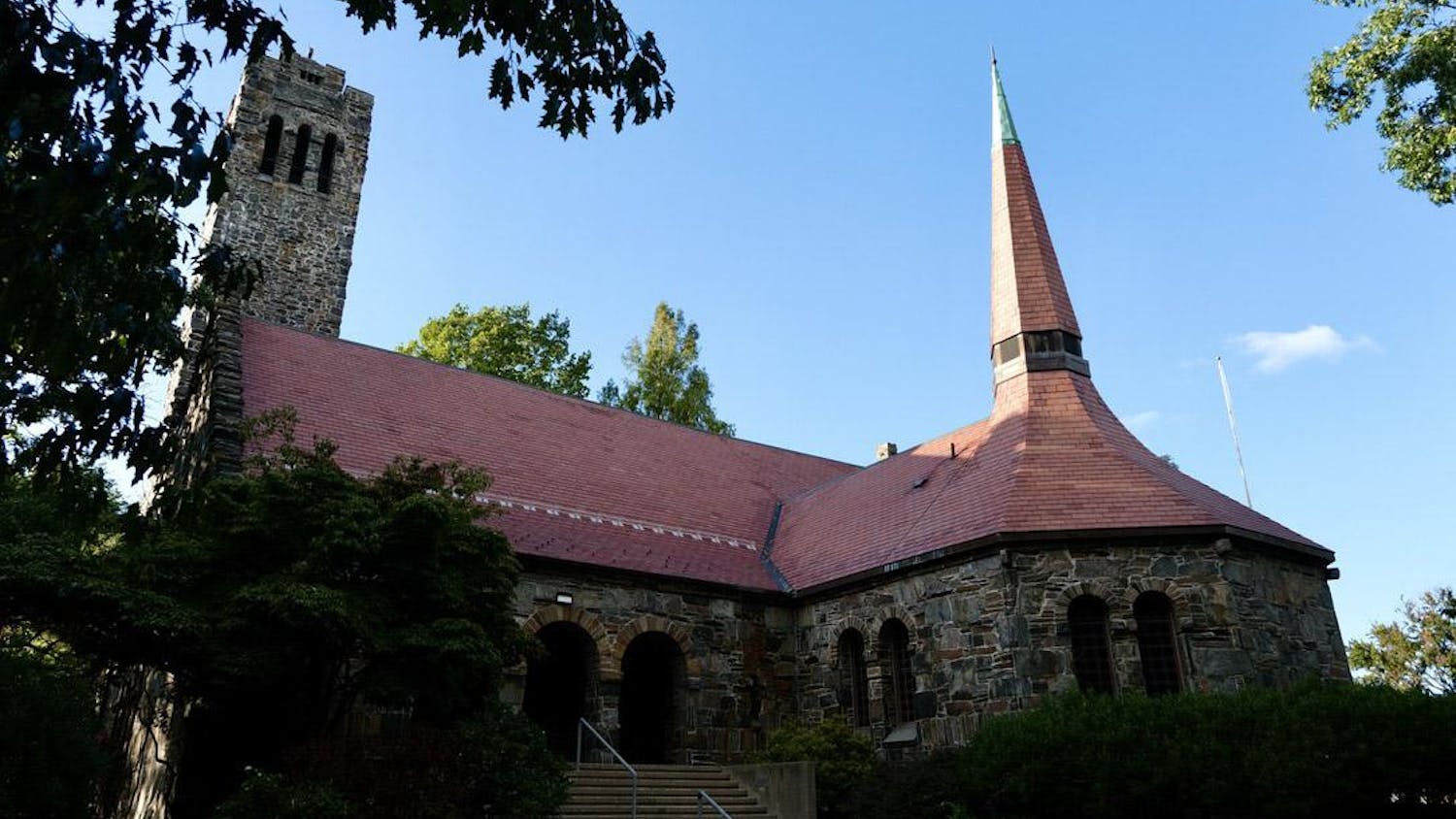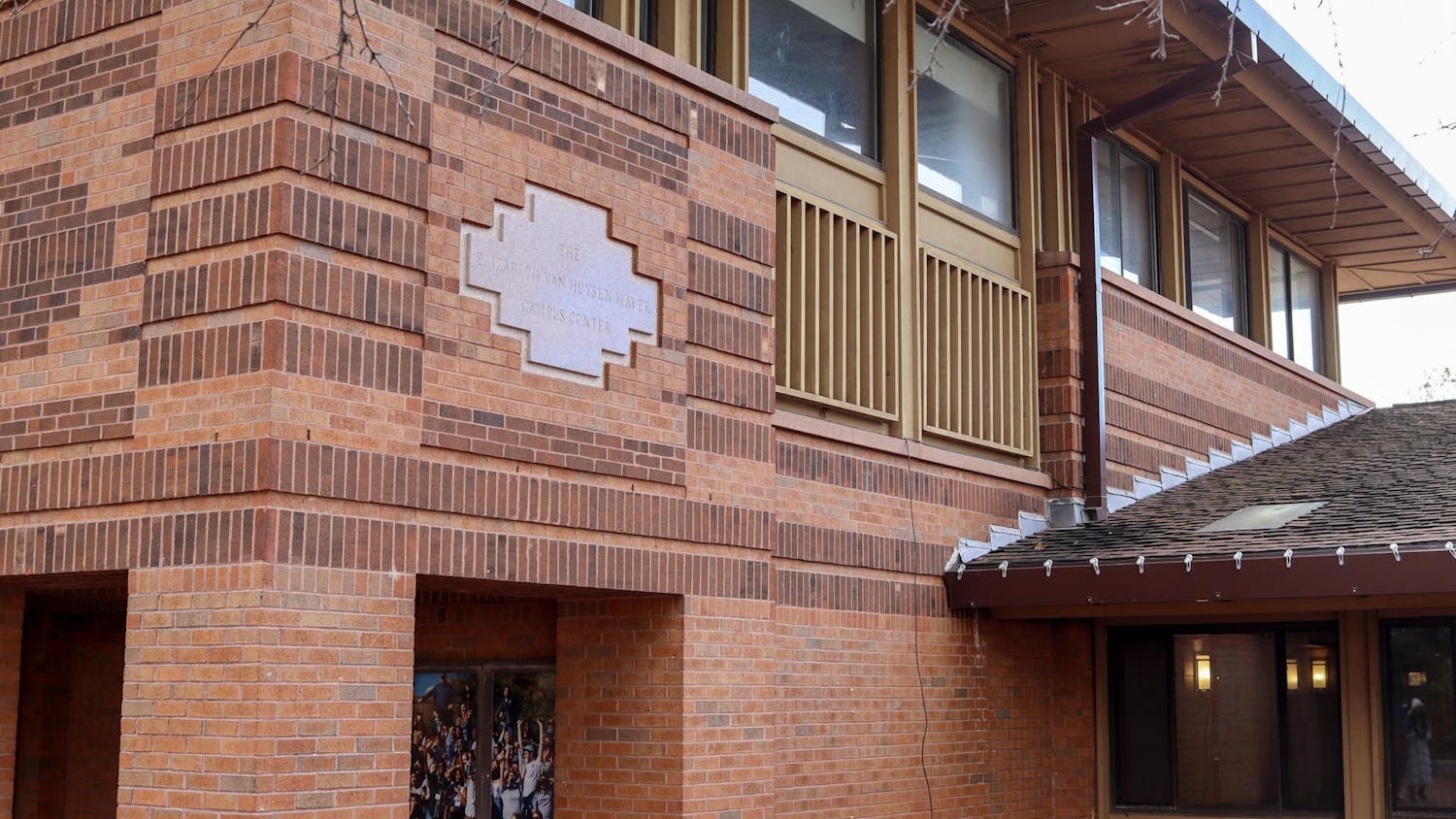Steve Locke, who is the City of Boston's artist-in-residence for 2018, explained his past and current projects during a Civic Life Lunchyesterday afternoon entitled “Monuments & Movements: The Art of Protest.” The Jonathan M. Tisch College of Civic Life hosted the lunch.
Senior Director of Tisch Programs Mindy Nierenberg introduced Locke and highlighted his proposed installation at Faneuil Hall, which garnered press coverage when the Boston Globe published an editorial in July 2018 expressing support for it.
“Steve’s proposal, and his work as an artist has sparked debate over how to come to terms with [a part of Boston’s] history,” Nierenberg said.
Locke, a professor at the Massachusetts College of Art and Design, described the subject and form of the installation, which is called “Auction Block Memorial at Faneuil Hall: A Site Dedicated to Those Enslaved Africans and African-Americans Whose Kidnapping and Sale Here Took Place and Whose Labor and Trafficking Through the Triangular Trade Financed the Building of Faneuil Hall.”
According to Locke, the installation will consist of a bronze plate about 10 feet by 16 feet, composed of two rectangles, the larger representing the auction block where enslaved people were sold and the smaller rectangle representing the place where the auctioneer would stand. Locke added that the plate would be heated to human body temperature year-round and that the surface of the plate — at level with the surround pavement — would be etched with a map of triangular trade routes and a diagram of the ship that carried enslaved people across the Atlantic Ocean.
Locke explained that the installation’s construction is imminent.
“It got approved from the city, and from property management who runs Faneuil Hall, [and] the [Edward Ingersoll] Browne Fund gave us $150,000, though we have to raise about $100,000 more,” Locke said. “The parks department approved it, the Freedom Trail Foundation approved it, so it’s going to go forward.”
Locke summarized what he believed was the rationale for some of those opposed to the installation, or those who would prefer to rename Faneuil Hall, which bears the name of the wealthy colonial merchant who financed the construction of the building and profited from the slave trade.
“People are conflating Faneuil Hall with monuments to racists and post-civil war monuments,” Locke said. “It’s not called Faneuil Hall because Peter Faneuil was a great man and we named it after him. It’s because it was his building and he built it."
Locke also dedicated time to highlight another of his works, entitled “Three Deliberate Grays for Freddie (A Memorial for Freddie Gray),” which was installed at the Isabella Stewart Gardner Museum from June 2018 until January of this year.
Locke described how he planned and designed the installation, which memorialized the 25-year-old black Baltimore resident who died from spinal cord injuries he sustained when he was arrested.
“I took some images of Mr. Gray while he was alive … and used pixel averaging software to figure out the colors, and then I mixed those colors in paint, and then I took those samples to Benjamin Moore and had paint made,” Locke said. “So [the colors are] 'Freddie Gray Street Corner,' 'Freddie Gray Arrest' and 'Freddie Gray Hospital.'”
Locke added that his work inspired several other works across the country.
“It became part of the For Freedoms billboard project in all 50 states ahead of the 2018 midterm elections,” Locke said. He added that the work was also redeveloped in Baltimore, and at Hillsborough Community College in Florida.
Locke also answered questions posed by moderator Kendra Field, associate professor of history and Africana studies and director of the Center for the Study of Race and Democracy.
Field compared her own work to Locke’s.
“The way you were speaking about your research process reminded me of some of the questions that I have doing historical work, trying to excavate the lives of, in some cases, my own ancestors, the care and integrity that’s required,” Field said.
Locke added that various historical and social developments explain people’s reluctance to discuss the past, affecting himself and his work as a result.
“Think about all the people who didn’t come home in the 40s and 50s, think about the people who went away for war and came back shattered and didn’t have access to care, think about the people who had their livelihoods taken away from them because of the Homestead Act,” Locke said. “I understand why my grandfather didn’t want to talk about the past, like I get it.”
After answering guiding questions from Field, Locke answered questions from the audience.
Locke explained that he is one of seven artists-in-residence for the City of Boston, each charged with reflecting on “resilience” in Boston, which creates the challenges of creating art that exists in the public sphere.
“Municipalities don’t really understand art, they don’t really trust art,” Locke said. “I had to hire a 501(c)(3) to represent me because the city won’t give money to an artist. They’ll give money to a nonprofit, but they won’t give money to an artist.”
As the Civic Life Lunch came to a close, Locke emphasized the importance of determination in public artwork, given the lack of understanding of those in government and the public.
“The hard part about having a vision is that you have to believe in it, even if nobody else does,” Locke said.
More from The Tufts Daily
Meet the three TCU Senate presidential candidates
By
Julieta Grané and Josue Perez
| April 23





